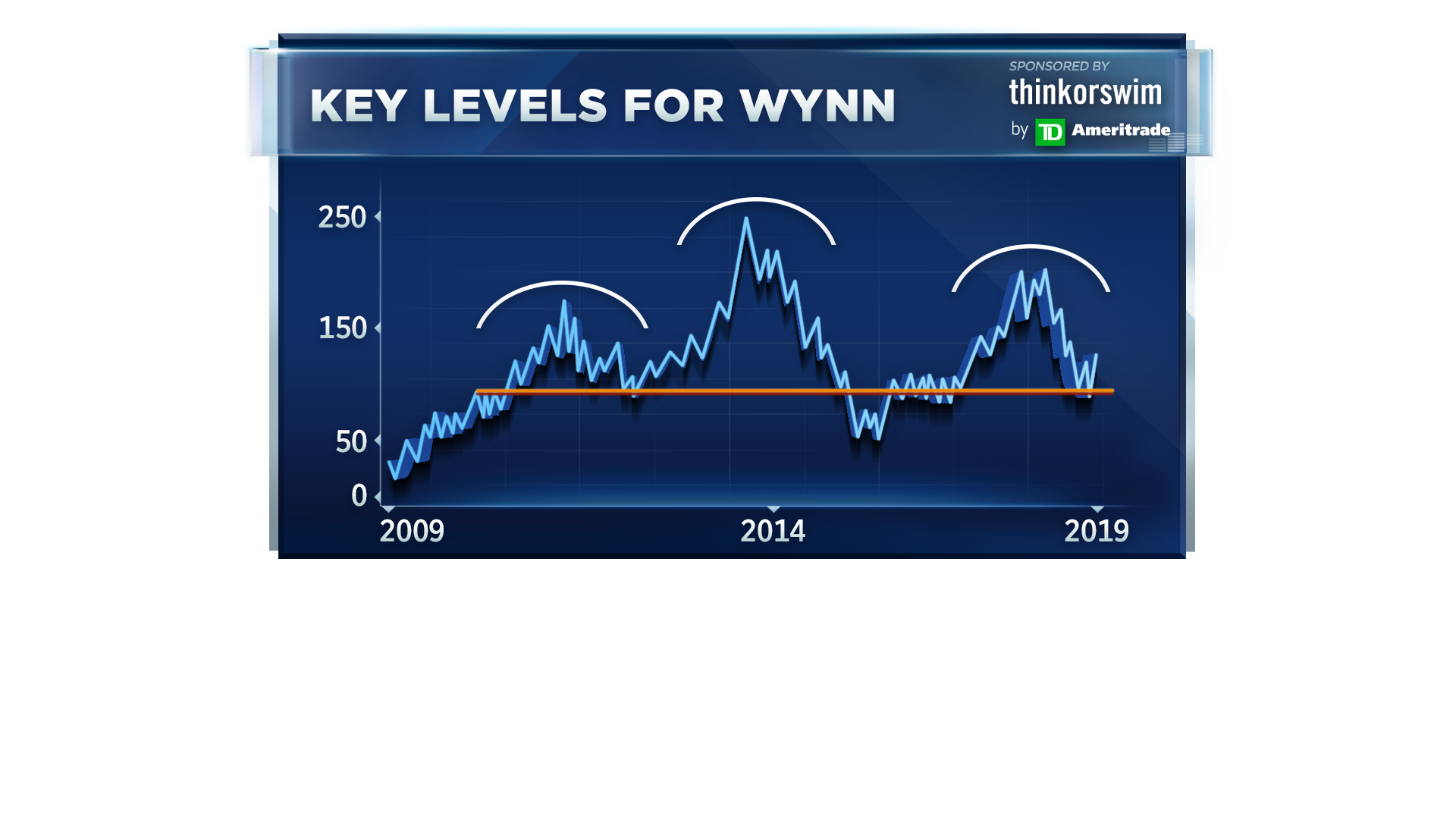
Wynn Resorts has been a big winner in the recent market rally. The casino stock has skyrocketed 40 percent off the December lows, and traders are lining up to place bullish bets on the company’s future.
Wynn calls traded at six times their average daily volume on Tuesday, highlighting a surge in positive sentiment around a company that was mired in scandal for much of 2018. One trader in particular seems to think Wynn is headed for a huge breakout, as broken down by RiskReversal.com’s Dan Nathan.
“A trader sold a call spread in March that he or she owned and then they rolled them out to April, buying 10,000 of the April 135/150-call spreads, and paying $3.50 for those,” Nathan said Tuesday on CNBC’s “Fast Money.”
Since each options contract is worth 100 shares of stock, paying $3.50 per contract for 10,000 contracts equates to a $3.5 million bet that Wynn is ready for an even bigger surge.
“Those [contracts] break even at $138.50, so that’s probably a long, just looking to add some leverage and rolling it out a month,” explained Nathan.
For this trade to break even, Wynn’s share price will have to rise about 7 percent between now and April expiration. But if this stock hits the trader’s target of $150 per share, that will represent an 18 percent surge over Wynn’s current level of $129.36.
So what are the odds that this big gamble on a casino stock pays off? Nathan points to two charts.
“The next identifiable catalyst will be their Q1 earnings. … If you’re looking at how it just broke that downtrend and just got above that recent resistance, maybe it’s due for a bit of a breakout.”
The potential breakout could be a big one, too. Wynn hit a high of just over $201 in February 2018. It’s not all good news, however. If you look further back into Wynn’s past, Nathan warns, some worrying trends start to come into view.

“This is the chart you’ve got to be worried about if you’re long and you’re playing this thing off of the lows, it’s pretty much an epic head-and-shoulders top,” says Nathan. “If that thing fails, it’s going right back to the neckline of $100.”
The bottom line, according to Nathan, is a classic refrain: “You [are better off] owning calls by defining your risk rather than being long in the stock.”
Be the first to comment